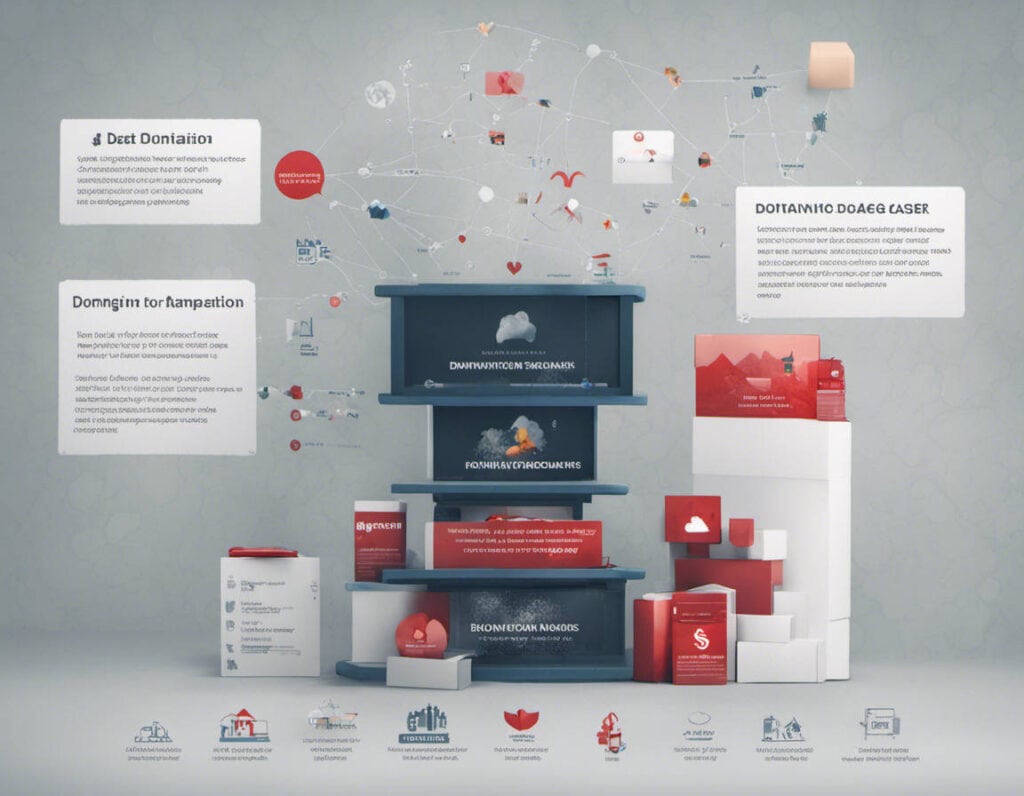Welcome, leaders and managers of fundraising organizations! We’re all on a mission, right? We aim to create positive change, offer assistance, and improve the world. But how can we be sure our fundraising efforts are working?
Enter the game-changer: fundraising data analytics. This is not just another buzzword but a transformative tool that is redefining how we understand donors, campaigns, and strategies. Stick around to dive deep into the universe of data analytics and learn how it’s revolutionizing our efforts in fundraising.
The Dawn of Data-Driven Fundraising
Remember the good old days of door-to-door fundraising? You’d knock, smile, and hope for the best. Effective? Perhaps. But sustainable and optimized? Not so much.
As fundraising managers, we’ve often depended on a hit-or-miss approach, based largely on gut instinct.
But fundraising has undergone a seismic shift thanks to data analytics. Think of data as the compass for your fundraising voyage; it points you in the right direction and tells you when to adjust your sails.
Imagine you’re a farmer. Would you prefer guessing where to sow seeds or would you rather know exactly which patches of soil are most fertile? Fundraising data analytics gives you that fertile ground, revealing where your efforts will reap the most benefits.
Harnessing Data for Deeper Donor Insights
In the bustling world of fundraising, knowing a donor’s name or their last gift amount is just scratching the surface. Ask yourself: What stories lie behind those numbers? What drives someone to open their wallet and support your cause repeatedly? And more importantly, how can this understanding help you forge deeper connections with them?
Data analytics is the virtual magnifying glass that provides a closer look at the intricate tapestry of donor behavior. Picture it as your fundraising organization’s superpower – like having x-ray vision that can see through walls of raw data to reveal insightful patterns and trends.
These patterns are more than just numbers; they reveal a narrative about each donor. Their preferences, their regularity in giving, the triggers that motivate them to donate more, or the reasons they might be holding back.
It’s about understanding their relationship with your cause and how it intertwines with their life’s story.
For instance, you might discover through data trends that a segment of your donors always contributes around certain global events or holidays. Another segment might increase their donations when you share success stories or beneficiary testimonials.
These insights, once identified, can then shape how you communicate with these donors, making your outreach efforts feel more personalized and genuine.
Simply put, data analytics goes beyond numbers and charts. It’s like transitioning from a casual chat with a stranger to a profound conversation with a close friend. In fundraising, these connections are invaluable.
So, when you analyze your donor data, keep in mind that you’re not just dealing with figures; you’re revealing stories, passions, and the essence of your supportive community. How will you use this knowledge to inspire, engage, and drive impactful change?
Crafting Personal Connections: The New Era of Fundraising
In a world flooded with advertisements, messages, and requests, what makes one stand out from the rest? It’s personal touch.
Recall your last visit to your local bookstore or cafe, where they remembered your name or your favorite order. It wasn’t just about the product; it was the comforting feeling of being known, seen, and appreciated. That’s what personalization is all about, and it’s transforming fundraising.
Now, imagine channelling that very essence into your fundraising campaigns. Picture a world where your organization doesn’t just send generic “thank you” notes. Instead, it sends personalized messages recognizing a donor’s third year of support or appreciating their continuous commitment to a particular cause.
That’s where data analytics steps in, transforming our donor databases from mere lists to goldmines of personalized engagement opportunities.
And it’s not just about segmenting donors based on donation patterns. It’s about understanding their journey with your organization. Recognizing milestones like their tenth donation or appreciating their consistent support despite economic downturns. It’s about turning impersonal stats into stories, stories that make your donors feel like they’re a part of a community, not just a name on a list.
In essence, data analytics is the compass guiding organizations into the future of donor engagement. Personalization isn’t just a trend – it’s an evolution in understanding, valuing, and connecting with our donors.
The Power of Analytics: A Deep Dive into Fundraising Metrics
In the constantly evolving world of fundraising, it’s essential to grasp not just your goals but also how effectively you’re moving towards them. So, how can you keep tabs on your campaigns? Here’s how.
- Pulse Points: KPIs in Fundraising
- Think of KPIs as the heartbeat of your fundraising efforts. They aren’t just fancy terms thrown around in board meetings.
- They represent tangible goals, helping you discern the success rate of your campaigns. Whether it’s donor acquisition rates, average gift amounts, or donor retention ratios, KPIs give you a holistic view of your campaign’s health.
- Just as a doctor checks vital signs to understand a patient’s well-being, KPIs offer insights into the well-being of your fundraising strategies.
- Adapting on the Fly: Real-time Data for Immediate Action
- Data analytics is like having a co-pilot, providing you with real-time feedback as your campaign unfolds.
- Notice a sudden dip in donor engagement? Or perhaps a spike in interest for a specific cause? This real-time data empowers you to adapt your strategies, much like a captain adjusting the ship’s course amidst changing winds.
- Narrating the Numbers: Data Visualization Tools
- If your fundraising data is a book, then visualization tools are the captivating illustrations that bring the story to life.
- Dashboards and charts take intricate, often overwhelming data, and turn them into digestible, visual narratives.
- Instead of sifting through endless spreadsheets, imagine a dashboard that paints a clear picture – showcasing which campaigns are soaring and which might need a nudge.
Remember, while passion and purpose drive fundraising efforts, it’s the precise analytics and measurements that ensure we’re on the right path. As we continue to sail the vast waters of fundraising, having these tools ensures that we not only move but also move in the right direction, making waves of positive impact.
Read more about fundraising data analytics here.
10 Actionable Tips for Securing Your Nonprofit’s Financial Future with Analytics
In the nonprofit world, ensuring financial stability is like keeping the heart of the organization beating. Passion and purpose drive us, but data analytics is the unsung hero that leads us to financial stability. Imagine it as a friendly assistant who points out the strengths and weaknesses of our plans, ensuring we’re on the right path.
- Start with the Fundamentals: Before delving into advanced analytics, make sure you have a strong system for gathering basic data. Without accurate data, even the best analytics tools will be of limited use.
- Set Clear Financial Goals: Define what financial sustainability looks like for your organization. Is it having a year’s worth of operating costs in reserve? Or perhaps diversifying your donor base?
- Use Predictive Analytics: Anticipate future giving trends based on past data. This can help you foresee potential funding gaps and make proactive strategies.
- Monitor Donor Life Cycle: Understand the journey of your donors. Identify patterns such as when they typically upgrade their donations or when they might lapse. Tailor your strategies accordingly.
- Optimize Operational Efficiency: Use data analytics to identify areas where operational costs can be reduced without compromising the quality of your programs.
- Track ROI Religiously: For every campaign or initiative, measure the return on investment. It will provide insights into which strategies are worth replicating and which need rethinking.
- Diversify Funding Streams: Analytics can highlight over-reliance on a particular funding source. Aim for a diverse mix of funding avenues to buffer against unforeseen disruptions.
- Engage in Regular Financial Health Check-ups: Just as you’d go for regular medical check-ups, schedule periodic reviews of your financial data to spot trends, both positive and negative.
- Educate Your Team: Ensure that your team understands the importance of data and is trained in using analytics tools. A data-savvy team is a powerful asset.
- Iterate and Adapt: The world of nonprofits is dynamic. What worked last year may not work today. Continuously use analytics to refine your strategies, keeping them aligned with the changing landscape.
By wisely harnessing the power of data analytics, you can steer your organization towards a bright and financially secure future.

Artificial Intelligence: The New Frontier in Fundraising
Imagine a time when you wished you could predict the outcomes of your decisions. In fundraising, we may not have a crystal ball, but we have something pretty close – Artificial Intelligence.
AI goes beyond traditional analytics. It doesn’t just give insights; it paints scenarios.
Imagine planning a campaign, and even before it starts, AI shows you its potential success rate, the best timing to launch, and the donor segments most likely to respond positively. It’s like glimpsing into the future, enabling you to fine-tune for the best results.
This isn’t just theory. Organizations worldwide are using AI to boost donor engagement, optimize campaign timing, and create compelling messages. It’s no longer a question of “Will AI change fundraising?” but “How soon can we use it?“
In short, while data analytics sets the stage, AI directs the show, ensuring fundraising isn’t just compelling but also forward-thinking.
So, as you plan your next campaign, remember: the power of prediction, once seen as magical, is now at your fingertips, thanks to AI.
Safeguarding Trust: Ethical Fundraising in the Data-Driven Era
In a world dominated by data and analytics, how can we ensure the sanctity of ethics in fundraising? Here are some pivotal steps and considerations:
The Bedrock of Trust
In any kind of relationship, be it personal or professional, trust is vital. For donors, having faith in an organization is as crucial as their financial contribution. By ensuring ethical fundraising, we’re not just preserving this trust, but also nurturing it.
Data Analytics as a Guardian
Think of data analytics as your organization’s silent sentinel. It’s constantly vigilant, monitoring campaigns for any signs of discrepancies or anomalies. This real-time surveillance ensures swift rectification of potential issues.
Transparency is Key
Use analytics to maintain an open line of communication with donors. Share how funds are utilized, the impact of their contributions, and the overall health of your campaigns. Transparency doesn’t just build trust; it fortifies it.
Data Protection and Privacy
In the age of information, data breaches can be catastrophic. Ensure that your organization has robust cybersecurity measures in place. After all, ethical fundraising isn’t just about how you raise funds, but also how you protect donor information.
Continuous Education
The realm of data and analytics is ever-evolving. Regularly train your team on the latest tools, technologies, and best practices to ensure that ethics aren’t just upheld, but are constantly advanced.
Feedback Loop
Encourage feedback from both internal stakeholders and donors. This two-way dialogue can highlight potential areas of concern and also provide insights on improving ethical standards.
A Proactive Approach
Don’t wait for a breach or an irregularity to occur. Use analytics to anticipate potential pitfalls and establish preventive measures. Being proactive, rather than reactive, can save both reputation and resources.
Documentation and Audits
Maintain comprehensive records of all campaigns, donor interactions, and financial transactions. Regular audits, both internal and external, can further ensure adherence to ethical standards.
Engage Ethical Tech Partners
When employing external tech solutions or partners, ensure that they too uphold the same ethical standards as your organization. A chain, after all, is only as strong as its weakest link.
Celebrate Ethical Wins
Recognize and reward teams or individuals who showcase exemplary ethical standards in their work. This not only encourages ethical behavior but also inspires others to do the same.
In summary, although data analytics provides exceptional insights and benefits, it also comes with the duty of ethical management. By integrating the aforementioned steps, organizations can ensure that they’re not just raising funds effectively, but are doing so with the highest degree of integrity and trustworthiness.
Final Thoughts | Embracing the Inevitable Rise of Fundraising Analytics
Fundraising data analytics is not a fleeting trend; it marks the start of a new era. This powerful tool helps us improve our strategies, concentrate on specific goals, and achieve exceptional efficiency in our campaigns.
So, embrace the future of fundraising without hesitation. Don’t let your competitors get ahead of you. Seize this opportunity now and adopt the unstoppable ascent of fundraising analytics.
Enhance your campaigns, maximize your impact, and discover a whole new level of success. Try your free demo with innovative and effective fundraising software today!


4 Comments
Data-Driven Fundraising Strategy: Leveraging Technology And Utilizing Data Analytics In Nonprofit Campaigns - Beest · October 28, 2023 at 12:34 am
[…] The allure of data-driven fundraising lies in its methodological approach. At its heart, it is an empirical process grounded in the principles of systematic inquiry and analysis. […]
10 Fundraising Campaign Metrics That Matter: Measuring Fundraising Effectiveness - Beest · November 2, 2023 at 2:43 am
[…] the intricate landscape of nonprofit operations, fundraising metrics serve as sophisticated instruments of precision, dissecting the complexities and rendering […]
The Role Of Technology In Streamlining Campaign Management - Beest · December 22, 2023 at 4:29 pm
[…] nonprofit, data is key. Collect, analyze, and act for success. Data analytics allows us to understand donor behaviors, preferences, and […]
Fundraising Metrics: Tracking Performance And Measuring Impact Of Your Campaigns - Beest · February 6, 2024 at 11:31 pm
[…] impact of fundraising efforts for nonprofit organizations. These metrics serve as the foundation upon which informed decisions are made, strategies are optimized, and relationships with supporters are […]
Comments are closed.